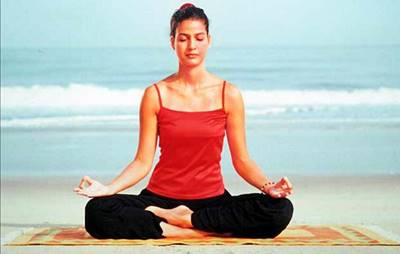Personal Training & Exercises: Report on Pakistani Market
Introduction
We started searching for our Personal Management report topic with clear goals in mind. We wanted to research an area that would not only fulfill our course requirements but would also provide a valuable and exciting learning experience for us. We wanted to imbibe something that could be useful to us and which we could beneficially incorporate in our everyday schedules. With these objectives in mind we started an exhaustive search for the various areas that we could do our report in. As we surfed the internent, leafed through magazines and journals for relevant material, the wealth of information available on exercise and physical fitness made us acutely aware of this neglected aspect of our lives. The more we read about exercise and the benefits enjoyed by physically active and healthy people the more our interest grew in the subject. It was soon abundantly clear to us that exercise was what we wanted to research on.
But we discovered that exercise itself was too broad a topic for our purposes, given our space and time constraints, so we decided to concentrate on a particular kind of exercise, namely aerobic exercise. Aerobic exercise is a very vast area as well and this report certainly does not deal in depth with all its aspects, however it has been our endeavour to present concisely and informatively the material that we have gathered on the subject.
We begin by commenting on the nature and essence of aerobic exercise, explaining the meaning of the word “aerobic”. We go on to enumerate the standards that can be used to ascertain the level of physical fitness of an individual. We also explain a simple procedure that can be emplyed to determine the desirable level of physical fitness for people of different ages and sexes. Our report then goes on to show how an exercise program should be embarked upon, we point out the prerequisites of exercise, the precautions that need to be taken and the safety principles that need to be adhered to before, during and after exercise.
During our study we learnt that few exercise professionals and athletes enjoy an injury free career. The frequent occurrence of exercise related injuries compelled us to believe that a report on exercise would be incomplete if it failed to address the injuries that often creep into the lives of athletes. We mention a few of the common exercise related injuries and outline the first aid procedures adopted for the relief of symptoms.
In the concluding section we illustrate our report by means of specific aerobic exercises. The exercises that we mention are step aerobics, swimming, cycling and jogging. We point out the muscle groups that are targeted in each of these exercises and the calories burnt in a work out of a particular duration and intensity. We also compare the usefulness of the various exercises as means of weitght loss and toning specific areas of the body.
A brief statement of conclusion appears at the end of the main body of the report.
SWIMMING
Why Technique Matters More Than Fitness
Multisport athletes are strongly inclined to work at swimming by doing more laps or working harder at them. Running and biking experiences make you think that more work is the way to get better. But swimming has more in common with such skill sports as tennis and skiing. Here’s why:
It’s the water that makes swimming different. Water robs the swimmer of energy and efficiency. With every stroke you take, the water is applying the brakes, trying to drag you to a halt, stealing energy from you.
Think about it this way: If you stand on the ground and jump into the air, you burn about 10 calories. Nine of those calories went directly into getting you off the ground. One was lost to the slight inefficiency of the muscular exertion. Because muscles contract by a racheting mechanism and that racheting action causes friction which creates heat–the reason we sweat when exerting ourselves–some of our calories are thrown off as waste heat. If on the other hand, you jump in the pool and swim a few strokes, burning the same 10 calories, only one of those calories would go directly into moving you forward; the other nine would be lost as waste energy because of the action of water drag.
Water is a frustrating medium for the person trying to move through it, and the nature of that medium makes the swimming puzzle far more difficult to solve than running and biking. Let’s compare it with running. A runner, with each stride, gets to push off solid footing while moving forward through thin air. The swimmer, on the other hand, with each stroke has to push against a liquid that seems to do nothing but swirl away when you try to push against it. And to compound your difficulty, in propelling yourself forward, you have to thrust your body through a medium that is a thousand times denser than air. For a runner, this would be like trying to run across a field of Jello into the teeth of a gale-force wind.
Water is so effective at robbing us of efficiency that scientists estimate that even world-class swimmers are probably only about 9 percent mechanically efficient–91 of every 100 calories being robbed by water drag and the difficulty of pushing a hand against liquid. The novice swimmer may be only 1 or 2 percent efficient, as many as 99 of every 100 calories being stolen by the water.
Because stroke efficiency is such a big factor, the great performances of world-class swimmers are approximately 70 percent due to the efficiency, economy and coordination of their body position and stroking movements, and only 30 percent a factor of their power and physical conditioning. For the less experienced and less skilled swimmer, perhaps 90 percent or more of your performance will be determined by how efficiently or inefficiently you move through the water, while less than 10 percent will be determined by how fit you are.
Therefore, if you can swim a quarter-mile in 10 minutes, but would like to improve your time to nine minutes, only about five to 10 seconds might be gained by getting in better shape, while 50 to 55 seconds will come from learning how to move more efficiently through the water.
“Inside-Out” Swimming
Most swimmers focus on working more or harder in order to swim better. But even those few swimmers who recognize that swimming is 70 percent form and 30 percent fitness, usually attack technique from the wrong direction. They focus first and almost exclusively on what their arms and legs are doing.
Certainly coaches reinforce that idea. Nearly every swim coach or instructor teaches swimming the same way, by telling you how your arms need to pull and legs need to kick in order to move your body down the pool. But the armstroke actually has only a minimal impact on how fast you swim. If a swimmer with a totally incorrect pulling pattern learned a nearly perfect pull, they might see a 5 to 10 percent improvement in their time. But because water is 1000 times denser than air and can throw huge drag forces against a swimmer who doesn’t know the tricks of becoming slippery, learning how to minimize drag has a far greater impact than maximizing propulsion. A swimmer who learned to significantly improve their body position or alignment might see an immediate 20 to 30 percent improvement in their speed or stroke efficiency, a phenomenon I see occur over and over at my swim camps.
Improving drag reduction starts with “Inside-Out” thinking. Get the head and trunk centered and balanced first. Don’t worry about perfecting the armstroke until much later in the process. If your body isn’t balanced, streamlined and stabilized, even the most powerful and effective pull will go to waste trying to overcome drag forces that could be easily eliminated with simple adjustments in body position. Moreover, you can’t maximize the power in your armstroke unless the body is balanced and stabilized first. So the keystone to the whole enterprise is getting the body in balance. Nothing else you can do in the pool will make as much of a difference for your efficiency and speed.
Getting balanced in the water is a matter of overcoming a physical fact of life: The human body is adapted for balance and mobility on landlong legs and lots of mass below the waist, mostly volume above it–the lungs, after all, are just bellows. (Fish have the opposite problem–designed ideally for balance in the water, but consider what would happen if you tried to stand one up on its tail.) In the water, we’re pretty buoyant between the armpits, rock-like below the waist. Naturally everyone’s longer, heavier end wants to fall, not just yours.
And it has less to do with body fat than you think. A lot of triathletes and cross-training runners say that they think they’ll probably never learn to swim well because they have so little body fat. “I’m a sinker; I’ll never have good body position,” they say. But Olympic swimmers are just as lean as runners and triathletes and they have perfect body position. They’ll ride higher in the water than most of you because they swim faster, but any swimmer can learn to be just as well balanced, and swim much faster with much less effort as a result.
RUNNING
Whatever the reasons for running …….to stay fit, to shave those love handles, to compete and win in road races, or just to enjoy the simple pleasure of motion, the key to improvement lies in a handful of fundamentals. These are no particular secrets, and they all tend to have in common sweat, joy, and perseverence, the touchstones of any sport. These fundamentals are simple enough– mileage, speed, patience, and the prudent combination of all three. The goal of any runner, novice or a seasoned veteran is to improve in these areas without compromising their health.
Whether one aspires to compete in a marathon or just achieve a sound physical condition through running, the training can be divided into five distinct phases.
Endurance Training
Endurance is the cornerstone of distance running success, and this phase is the longest and most important of the training cycle. During this time the heart, lungs and mind are conditioned to run for long periods of time. The goal in this phase of training is to keep the body moving longer, not faster. The stronger the endurance foundation, the more resources one will have to draw on during racing season.
Strength Training
Now that the miles have been built up, it’s time to begin conditioning oneself to run them faster and stronger. The strength phase is when the transition into speedwork is started. This is done by by adding hills to one’s routine and maybe one or two fartlek. A weight-training program may also be added now to build further leg strength.
Speedwork
While the mileage will remain high, it will be slightly less than in the endurance and strength phases. Quality runs are more important than quantity now. The strength workouts are replaced by trackwork to complete the mix of endurance, stamina and speed. Experienced runners will do as many as three speed workouts per week during this phase.
Tapering
For the best possible effort on the big day, one has to be rested and ready. That’s what the tapering phase is all about. The longer the race the more rest one should take.
Recovery
After a few hard weeks of racing comes a period of well-earned rest. This is the time to allow muscles and tendons to heal and to restore their strength. The benefits for the next season can be substantial. Runners are advised to relax and sit back.
How to motivate yourself to hit the track consistently?
Runners often have trouble simply convincing themselves to put on the shoes and hit the road. It happens to the best of them: no matter how many great running days they have, there will be a handful when their most difficult steps are the ones taking them to the door.
Motivational experts have the following strategies that help one to get moving.
Pencil Yourself In
First things first, begin with consistency. The primary key to running regularly and for the long term is to build it into your daily routine. Make running a habit. Try to run at pretty much the same time every day. Put yourself on a schedule where you run every morning when you wake up, or at your lunch hour, or right after you get home from work. If you find yourself “just too busy,” then pull out your little DayTimer appointment book and pencil in an hour-long appointment with yourself and the road. You have to make yourself a priority, and if you are a runner, that means making running a priority. Set some time aside for yourself. You deserve it.
Finding Inspiration
Sometimes, though, it’s just a matter of needing a little inspiration, something to get your enthusiasm heated beyond a simmer. Picture yourself setting a
personal record in that race next month. Review your running program and think about your goals and what you hope to accomplish.. Psyche yourself up, stir your natural excitement about your sport.
If you’re still feeling apathetic, it’s time for drastic action. You have to trick yourself a little. Tell yourself that you’ll only do half the scheduled run. You’ll take it really easy, you say. Piece of cake, no problem. Ease yourself into your running clothes and out the door. After you get running, you may very well find that you would indeed prefer to do the shorter run at an easy pace. And that’s fine; a short run is better than no run at all. Chances are, though, that once you start running, you’ll feel good — great, even — and the full run won’t seem like nearly such a chore.
Comfort Rituals
But maybe it’s bad this time. Maybe contemplating even half a run makes your legs feel like lead. It’s time to invoke the twin powers of ritual and comfort. Running guru Jeff Galloway suggests, “Go ahead and give in. Tell yourself you may not run after all…. By doing this, you reduce the negative mental bombardment temporarily.” Galloway then offers a six-step ritual to nudge you closer to your run:
“Step 1. Listen to some up-tempo, energizing music.
“Step 2. Put on running clothes and shoes to be comfortable, not to run.
“Step 3. Relax. Maybe read something uplifting.
“Step 4. Step out the door to see what the weather is like.
“Step 5. Walk down to the end of the block to see what the neighbors are doing.
“Step 6. Start running — slowly.”
While these steps may sound a bit contrived, they do sometimes work to help lift stress along with your spirits. Try your own variation of this ritual and you might be surprised to find yourself running.














